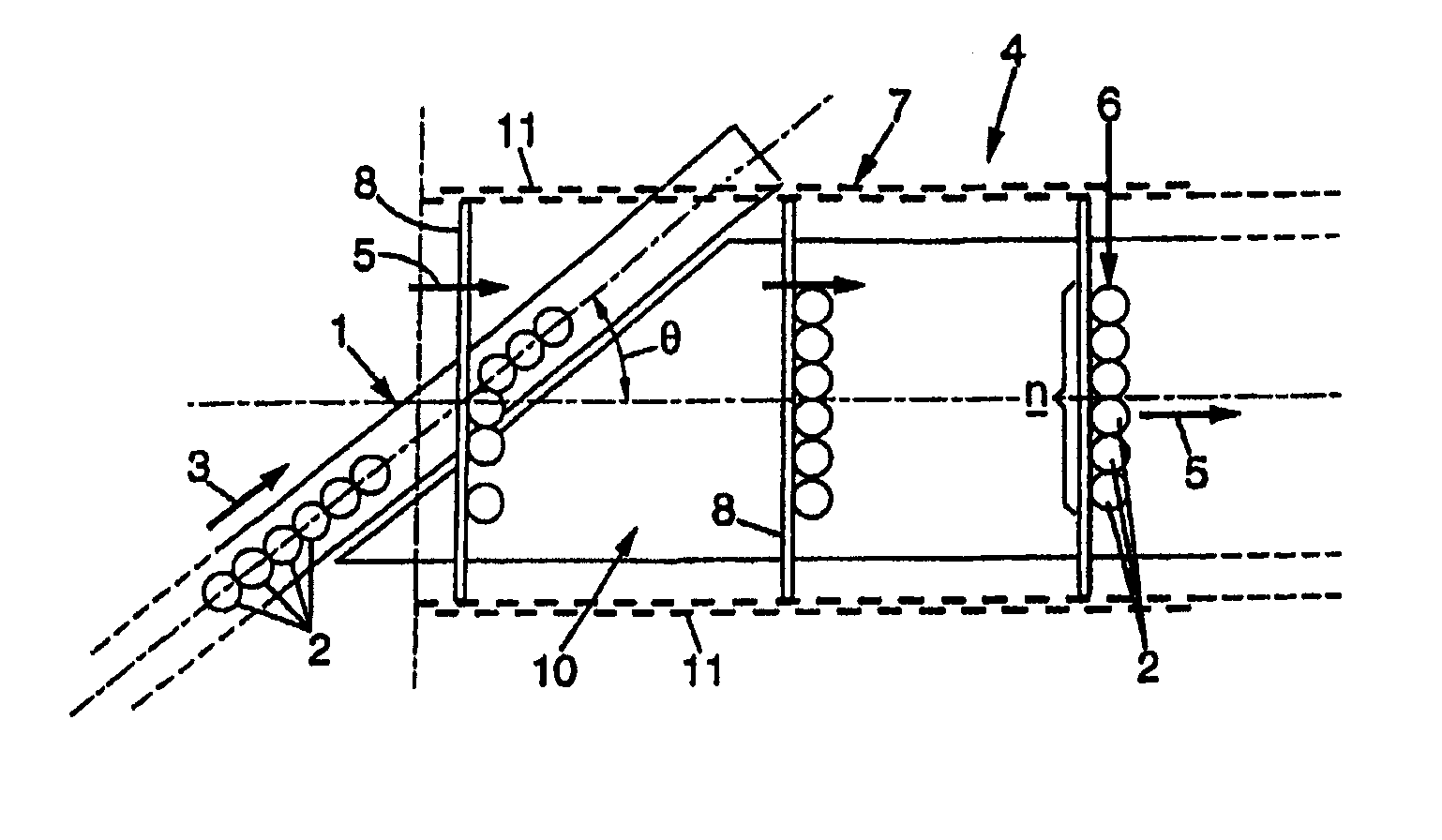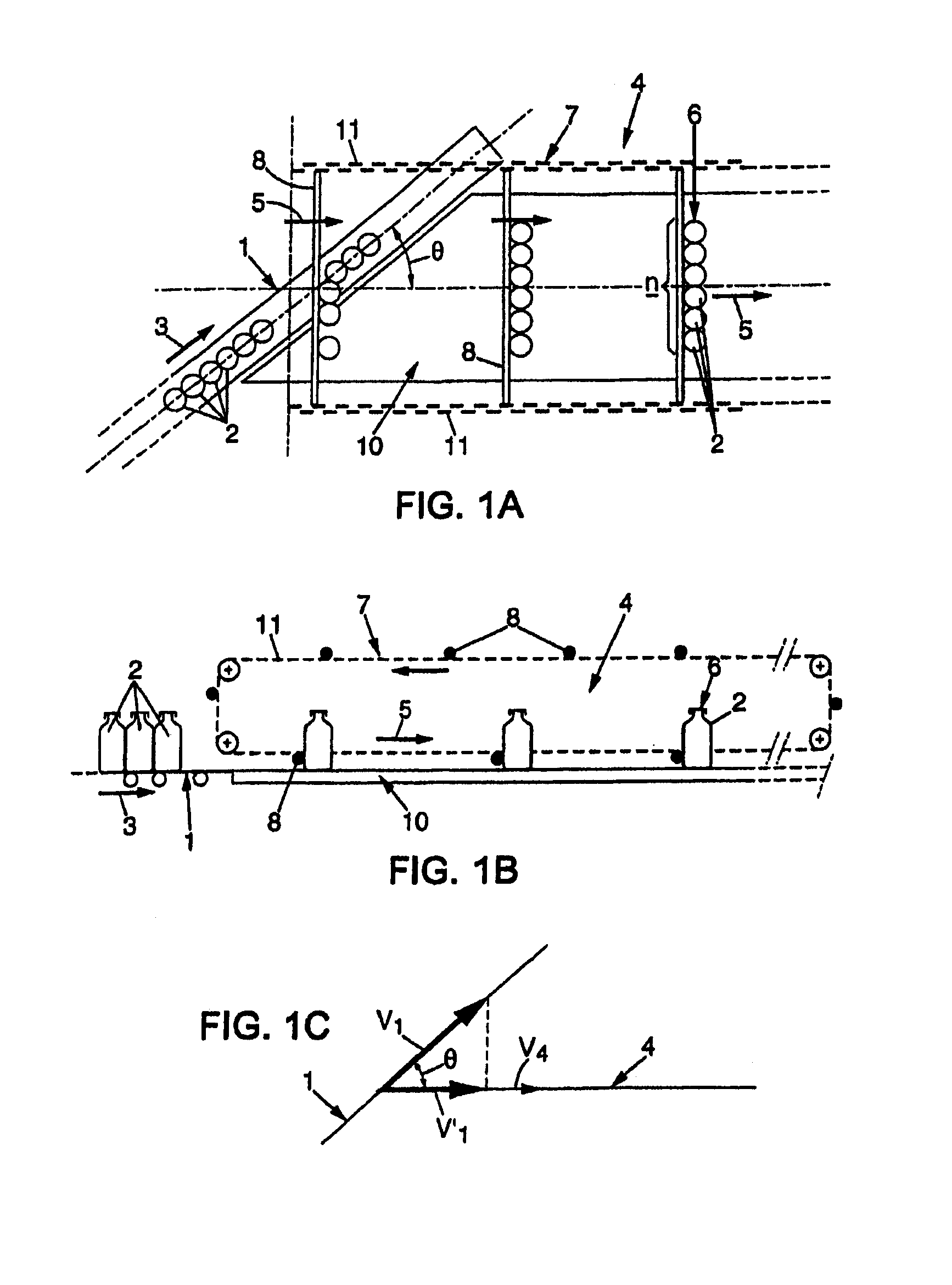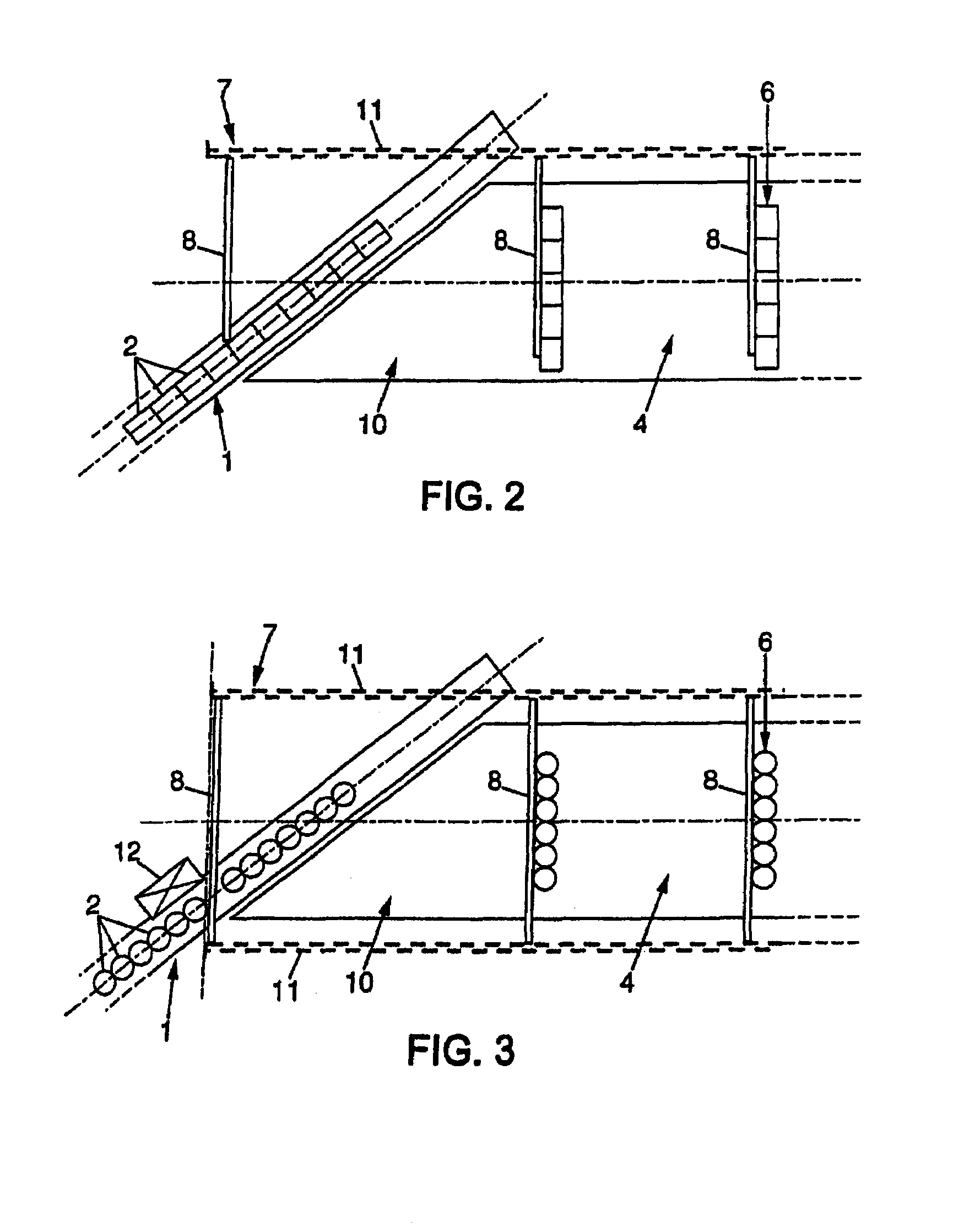Machine for transferring objects aligned in rows
a technology of objects and machines, applied in the field of transferring objects, can solve the problems of accelerating objects at a very large speed, unable to achieve affecting the speed of objects,
- Summary
- Abstract
- Description
- Claims
- Application Information
AI Technical Summary
Benefits of technology
Problems solved by technology
Method used
Image
Examples
Embodiment Construction
[0027]With reference first of all to FIGS. 1A and 1B, a first conveyor 1 (motor-driven conveyor, for example of the belt or tray conveyor type, or motorless conveyor) brings (arrow 3) objects 2 (for example bottles as illustrated) disposed in line one after the other; in the example illustrated, the objects 2 are juxtaposed to one another, although this disposition is not necessary as will appear hereinafter.
[0028]A second conveyor 4 clears (arrow 5) the objects 2 disposed in successive rows 6 of n objects abreast.
[0029]For this purpose, the second conveyor 4 comprises objects movement means 7 with at least one pushing member made up in the form of a pushing bar 8 which is movable (arrow 5) in order to be brought into lateral contact with n objects aligned on the first conveyor to push them, together, onto a tray 10 of the second conveyor where they are disposed in a row of n objects. The tray 10 extends laterally to the first conveyor 1 as appears in FIG. 1A.
[0030]The first and sec...
PUM
 Login to View More
Login to View More Abstract
Description
Claims
Application Information
 Login to View More
Login to View More - R&D
- Intellectual Property
- Life Sciences
- Materials
- Tech Scout
- Unparalleled Data Quality
- Higher Quality Content
- 60% Fewer Hallucinations
Browse by: Latest US Patents, China's latest patents, Technical Efficacy Thesaurus, Application Domain, Technology Topic, Popular Technical Reports.
© 2025 PatSnap. All rights reserved.Legal|Privacy policy|Modern Slavery Act Transparency Statement|Sitemap|About US| Contact US: help@patsnap.com



